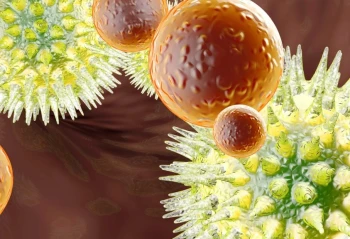The flu – not as harmless as it seems
Influenza, or the flu, is an infectious disease caused by the influenza virus. Every year, millions of people worldwide become ill, and hundreds of thousands die as a result. The annual flu vaccine does not always provide sufficient protection. This is because the virus keeps changing, making the vaccine less effective over time. That’s why it is important to develop vaccines that offer longer-lasting protection.
Sometimes completely new variants of the virus emerge. This can happen, for example, when bird flu mixes with other influenza viruses. Such new variants can cause pandemics, like the Spanish flu in 1918, which is estimated to have killed about 50 million people.
At BPRC, we use primate models to better understand how the immune system responds to the flu virus and how vaccination can improve this response.

Ongoing Research
PhD Research (2023–2027)
This project focuses on how the immune system reacts when the flu virus enters the body and how vaccination can strengthen this response. The research emphasizes antibodies (immunoglobulins) against hemagglutinin (HA), an important surface protein of the influenza virus. These antibodies play a major role in protection against flu. In this study, we examine how these antibodies are formed.
Collaborating Partners
University of Amsterdam, Amsterdam UMC (Dr. M.J. van Gils)
Sponsor
BPRC internal
Refinement, Reduction, and Replacement of Animal Testing
For this research, we use only material collected during previous studies. No additional animals are used.
Previous Research
PhD Research (2017–2022)
Using HA proteins produced in the laboratory, Aafke Aartse studied which antibodies are formed after an initial influenza infection and how vaccination influences the development of these antibodies. It is generally assumed that the first exposure determines how the immune response will unfold. Such immune responses cannot be studied in humans because people are already exposed to various influenza viruses early in life. Therefore, an animal model closely related to humans is essential to study the dynamics and progression of infection or vaccination.
The results are described in the articles below and in Aafke Aartse’s PhD thesis.
- https://pubmed.ncbi.nlm.nih.gov/37691927/
- https://pubmed.ncbi.nlm.nih.gov/36405682/
- https://pubmed.ncbi.nlm.nih.gov/34358138/
- https://pubmed.ncbi.nlm.nih.gov/32510256/
Development of Influenza Infection Models and In-Vitro Tests
With support from industrial partners and internal funding, BPRC developed infection models in primates. In addition, several laboratory tests were established to study immune responses in detail. These models and tests have been used to evaluate new, innovative influenza vaccines.
The results have been published in:
- https://pubmed.ncbi.nlm.nih.gov/33671829/
- https://pubmed.ncbi.nlm.nih.gov/32975505/
- https://pubmed.ncbi.nlm.nih.gov/30920368/
- https://pubmed.ncbi.nlm.nih.gov/26537681/
- https://pubmed.ncbi.nlm.nih.gov/25946071/
Combinatorial Immunization Strategy… (EDUFLUVAC, 2013–2018)
This European research project focused on developing a vaccine strategy that trains the immune system to better recognize different influenza variants. This approach aims to improve protection against seasonal flu changes (antigenic drift).
Publications:
- https://pubmed.ncbi.nlm.nih.gov/37691927/
- https://pubmed.ncbi.nlm.nih.gov/30340885/
- https://pubmed.ncbi.nlm.nih.gov/28146323/
Targeted DNA Vaccines for Infectious Diseases (EUPRIM-Net)
Research on the effectiveness of targeted DNA vaccines in rhesus macaques.
Publication:
Immunogenicity and Efficacy Study… (Crucell B.V., 2014)
This project investigated a new influenza vaccine based on advanced, adjuvant-enhanced trimeric HA proteins targeting H1N1.
Publication: